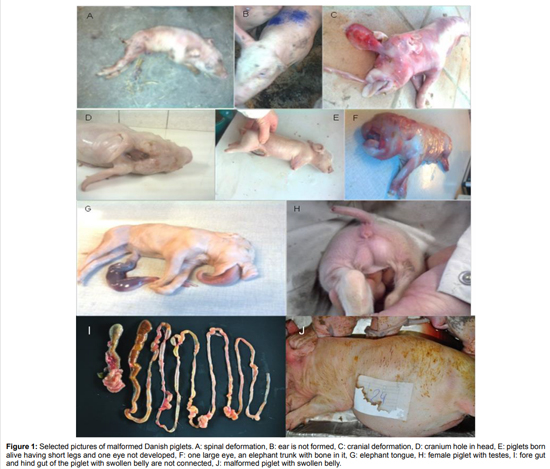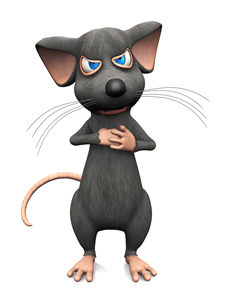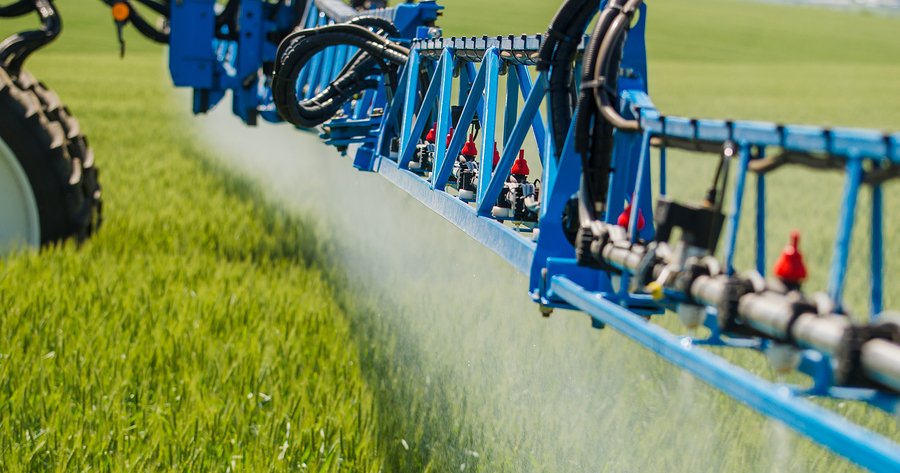Glyphosate and Roundup® (the herbicide made with glyphosate) have recently been in the news. Most of it has been bad news, at least from the viewpoint of those concerned about health, but there is one ray of hope that recently burst through the darkened skies, a crack in the wall if you will. We’ll cover these items in a moment, but first let’s get a quick recap on how we got where we are today.
Glyphosate History
Glyphosate was discovered in 1950 by Dr Henri Martin, a chemist working for Cilag, a Swiss pharmaceutical company.1 Dill GM, Sammons RD, Feng PCC, Kohn F, Kretzmer K, Mehrsheikh A, Bleeke M, Honegger JL, Farmer D, Wright D, Haupfear EA. Glyphosate: discovery, development, applications, and properties. Chapter 1. In: Nandula VK, editor. Glyphosate resistance in crops and weeds: history, development, and management. New York: Wiley; 2010. pp. 1–33. However, since no pharmaceutical applications were identified, the patent was sold to a series of other companies who then searched for possible end uses. Dr. John Franz, a chemist working at Monsanto, was the person who, in 1970, identified the herbicidal activity of glyphosate. As a result, in 1974, Monsanto formulated, branded, and first sold the herbicide that we have come to know and “love” called Roundup.2 Duke SO, Powles SB. Glyphosate: a once-in-a-century herbicide. Pest Manag Sci. 2008;64:319–325. http://www.ncbi.nlm.nih.gov/pubmed/18273882
After its introduction, Roundup’s use grew steadily, if not spectacularly, because it was limited in that it killed all vegetation–crops included–and with a few exceptions, could only be sprayed between rows of crops. Exceptions included uses such as to control late-season weeds after harvesting, which meant the entire field could be sprayed since the crops were now gone.
So, how did glyphosate become the dominant herbicide worldwide? The game changer happened in 1996 when Monsanto genetically engineered Roundup ready, herbicide-tolerant, soybean, maize, and cotton varieties which were approved for planting in the U.S. This “breakthrough” dramatically extended both the time-period during which glyphosate-based herbicides could be applied as well as the acreage that could be sprayed–as no care needed to be exercised in protecting the crops themselves from contact with the spray. Entire fields could now be covered with weed killing glyphosate throughout the growing season. To be sure, federal lawsuits delayed full implementation until 2011, at which point all barriers were removed.3 “Genuity Roundup Ready Sugarbeets,”. Monsanto. April 11, 2017. (Accessed 5 Aug 2018.) http://monsanto.com/company/media/statements/sugarbeets/. Accessed 9 Aug 2015 , 4 “Lawsuit Involving Roundup Ready Alfalfa'”. Monsanto. April 11, 2017. (Accessed 5 Aug 2018.) http://www.monsanto.com/newsviews/pages/roundup-ready-alfalfa-supreme-court.aspx Today, almost 90% of all transgenic crops grown worldwide are glyphosate resistant, which means the adoption of these crops has increased at a relentlessly steady pace.
Cancer
 So, does the glyphosate cause cancer or not? For most people, that’s the big question.
So, does the glyphosate cause cancer or not? For most people, that’s the big question.
At first glance, the world’s scientists seem conflicted. For example, in 2015, WHO’s International Agency for Research on Cancer (IARC) concluded that glyphosate is “probably carcinogenic to humans.”5 “IARC Monographs Volume 112: evaluation of five organophosphate insecticides and herbicides.” WHO IARC. 20 March 2015. http://www.iarc.fr/en/media-centre/iarcnews/pdf/MonographVolume112.pdf Then in 2016, a report from the United Nations (UN) and World Health Organization (WHO) concluded that glyphosate is “unlikely to pose a carcinogenic risk to humans from exposure through the diet.”6 “JOINT FAO/WHO MEETING ON PESTICIDE RESIDUES.” WHO. 16 May 2016. http://www.who.int/foodsafety/jmprsummary2016.pdf?ua=1 WHO explained the discrepancy by stating that the IARC report merely identified potential hazards under any possible theoretical situation, whereas the 2016 report assessed the level of risk to consumers associated with real world dietary exposure to glyphosate residues in food. Meanwhile, U.S. agencies, including the Environmental Protection Agency (EPA), have concluded that glyphosate is safe if properly used.7 “EPA Releases Draft Risk Assessments for Glyphosate.” EPA December 18, 2017. http://www.epa.gov/pesticides/epa-releases-draft-risk-assessments-glyphosate A 2017 National Institutes of Health study found no links between glyphosate and cancer other than a “possible” association with acute myeloid leukemia.8 Jennifer Sass. “Updated Ag Health Study of Glyphosate and Cancer.” NRDC November 15, 2017. (Accessed 9 Aug 2018.) http://www.nrdc.org/experts/jennifer-sass/updated-ag-health-study-glyphosate-and-cancer
Confused yet? Well, hold on. It gets worse.
In 2018, IARC firmly defended its 2015 finding that glyphosate is indeed “probably carcinogenic” before the U.S. House of Representatives science committee.9 Corbin Hiar. “Under fire by U.S. politicians, World Health Organization defends its claim that an herbicide causes cancer.” Science. Feb 7, 2018. (Accessed 9 Aug 2018.) http://www.sciencemag.org/news/2018/02/who-rebuts-house-committee-criticisms-about-glyphosate-cancer-warning In fact, in a monograph published in January 2018, they stated:10 Prepared by the IARC Director. “IARC response to criticisms of the Monographs and the glyphosate evaluation.” WHO IARC. January 2018. http://www.iarc.fr/en/media-centre/iarcnews/pdf/IARC_response_to_criticisms_of_the_Monographs_and_the_glyphosate_evaluation.pdf
“Since the evaluation of glyphosate by the IARC Monographs Program in March 2015, the Agency has been subject to unprecedented, coordinated efforts to undermine the evaluation, the program and the organization. These efforts have deliberately and repeatedly misrepresented the Agency’s work. The attacks have largely originated from the agro-chemical industry and associated media outlets. They have taken place in the context of major financial interests relating to: a) the relicensing of glyphosate by the European Commission; b) hundreds of litigation cases in the USA brought by cancer patients against Monsanto, claiming that their malignancies were caused by glyphosate use; c) and the decision by the Californian Environmental Protection Agency to label glyphosate as a carcinogen.”
Incidentally, the above quote mentions “hundreds” of litigation cases concerning glyphosate and cancer in the US. So, how many are we talking about? In fact, there are some 5,000 cases against Monsanto pending, mostly in state courts. But in July of 2018, a federal judge presiding over more than 400 lawsuits which claim that glyphosate causes cancer ruled that the plaintiffs could present their evidence in court.11 Ross Todd. “Judge OKs MDL Claims Against Monsanto, Says Plaintiffs Face ‘Daunting Challenge’ of Tying Roundup to Cancer .” TheRecorder. July 10, 2018. (Accessed 9 Aug 2018.) http://www.law.com/therecorder/2018/07/10/chhabria-greenlights-mdl-claims-against-monsanto-but-says-plaintiffs-face-daunting-challenge-of-tying-roundup-to-cancer/?slreturn=20180709215726 Although, U.S. District Judge Vince Chhabria said the evidence was “rather weak” and that lawyers faced a “daunting challenge” in convincing him to let the jury hear evidence linking individual cancer cases to glyphosate, he also said the evidence linking glyphosate to non-Hodgkin’s lymphoma was “not junk science” and could be heard by a jury.
To summarize:
- Those against glyphosate and Roundup say that the evidence points to the strong possibility they cause cancer and point to the studies that support that POV
- On the other hand, those who promote the use of glyphosate say those studies are irrelevant because no product contains enough glyphosate to cause cancer and point to the studies that support that POV
However, there’s more to the story.
Glyphosate Exposure in the Real World
 The problem is that everything we’ve looked at so far–either pro or con–has looked at glyphosate in isolation. In the real world, glyphosate is anything but isolated. It’s everywhere and in everything we eat, from grains to honey and water to wine.
The problem is that everything we’ve looked at so far–either pro or con–has looked at glyphosate in isolation. In the real world, glyphosate is anything but isolated. It’s everywhere and in everything we eat, from grains to honey and water to wine.
The Detox Project started tracking glyphosate levels in a number of foods back in 2015 and has so far found alarming levels of glyphosate in many common foods including General Mills’ Cheerios and Honey Nut Cheerios, Kellogg’s Corn Flakes, Raisin Bran, and Kashi Organic Promise, PepsiCo’s Doritos Cool Ranch and Lay’s Kettle Cooked Original potato chips, and Nabisco’s Ritz Crackers and Oreo cookies, as well as many more famous products at levels that present significant risks according to the latest independent peer-reviewed science on glyphosate.12 “Food Testing Results.” The Detox Project. (Accessed 9 Aug 2018.) http://detoxproject.org/food-testing-results/
But as bad as that is, you must remember that in the real world, things are even worse–far worse. The reality is that we don’t ingest glyphosate in isolation–one product at a time. Our intake is cumulative, with each thing we consume adding to our total intake of glyphosate. It is this cumulative intake that is disturbing.
In 2016, Moms Across America sent 10 major California wines out for testing. 100% of them tested positive for glyphosate.13 Zen Honeycutt. “Widespread Glyphosate Contamination in Wine.” Mom’s Across America. March 24, 2016. (Accessed 9 Aug 2018.) http://www.momsacrossamerica.com/glyphosate_contamination_in_wine This includes conventional (chemically grown), organic, and biodynamic wines.
In 2018, a study of honey taken directly from 59 bee hives on the Hawaiian island of Kauai found glyphosate residue in over a quarter of the honey samples, at concentrations up to 342 ppb.14 Berg CJ, King HP, Delenstarr G, Kumar R, Rubio F, and Glaze T. “Glyphosate residue concentrations in honey attributed through geospatial analysis to proximity of large-scale agriculture and transfer off-site by bees.” PLoS One. 2018 Jul 11;13(7):e0198876. http://www.ncbi.nlm.nih.gov/pmc/articles/PMC6040695/ Of 15 honey samples store-purchased on Kauai, glyphosate was detected in 33%. Disturbingly, the study suggests that the herbicide was being carried from the site of its use into other areas by the bees themselves. The study concluded that best management practices currently in use for curtailing pesticide migration are not effective and must be carefully reassessed.
In 2002, a total of 154 water samples were collected during a study in nine Midwestern States. Glyphosate was detected at low levels in 36 percent of the samples, while its degradation product, aminomethylphosphonic acid (AMPA) was detected in 69 percent of the samples.15 “Glyphosate Herbicide Found in Many Midwestern Streams, Antibiotics Not Common.” USGS. (Accessed 9 Aug 2018.) http://toxics.usgs.gov/highlights/glyphosate02.html And according to a small research study jointly cited by Moms Across America and Sustainable Pulse, close to 70 percent of household drinking water tested contained between 0.085 and 0.33 parts per billion of glyphosate.16 Zen Honeycutt, Henry Rowlands. “GLYPHOSATE TEST RESULTS: Glyphosate Testing Full Report: Findings in American Mothers’ Breast Milk, Urine and Water.” Moms Across America. April 7, 2014. (Accessed 9 Aug 2018.) http://www.momsacrossamerica.com/glyphosate_testing_results The current limit in Europe is 0.1 parts per billion, which might not sound like much, but even at that level, glyphosate can damage 4000 genes and cause serious health problems. In the US, the limit is four times that, or 0.4 parts per billion. As a side note, levels of glyphosate found in urine tests in Americans are ten times higher than are found in Europeans.
The Whole Is More Toxic than the Sum of Its Parts
But there’s an even bigger problem. In the real world, pesticides and herbicides are invariably used in multi-ingredient formulations. In addition to the active ingredients such as glyphosate, which are usually tested alone, they contain adjuvants, which are often kept confidential and are deemed inert by the manufacturing companies. As it turns out, that’s a mistake. A 2014 French Study tested the toxicity of 9 pesticides, comparing active principles and their formulations, on three human cell lines (HepG2, HEK293, and JEG3). These nine chemicals, including glyphosate, are the active principles of 3 major herbicides, 3 insecticides, and 3 fungicides.17 Robin Mesnage, Nicolas Defarge, Joël Spiroux de Vendômois, and Gilles-Eric Séralini. “Major Pesticides Are More Toxic to Human Cells Than Their Declared Active Principles.” Biomed Res Int. 2014;2014:179691. http://www.ncbi.nlm.nih.gov/pmc/articles/PMC3955666/ The researchers measured mitochondrial activities, membrane degradations, and caspases 3/7 activities. (The caspases are a group of proteolytic enzymes that play a central role in cell apoptosis.) Fungicides were the most toxic with concentrations from 300–600 times lower than agricultural dilutions, followed by herbicides, and then insecticides, with very similar profiles in all cell types. Despite its relatively benign reputation, Roundup was among the most toxic herbicides and insecticides tested. Most importantly, 8 formulations out of 9 were up to one thousand times more toxic than their active principles. In fact, POEA (polyethoxylated tallowamine), one of the “inert” ingredients in Roundup (it’s used as a surfactant), has been shown to be far more cytotoxic than glyphosate itself for several human cell types, at concentrations a hundredth to ten-thousandth that of glyphosate.18 Mesnage R, Bernay B and Séralini GE. “Ethoxylated adjuvants of glyphosate-based herbicides are active principles of human cell toxicity.” Toxicology 2013, 2-3, 122-28. http://www.ncbi.nlm.nih.gov/pubmed/23000283 That certainly gives new meaning to the word “inert”.
As the French study concluded, “Our results challenge the relevance of the acceptable daily intake for pesticides because this norm is calculated from the toxicity of the active principle alone. Chronic tests on pesticides may not reflect relevant environmental exposures if only one ingredient of these mixtures is tested alone.”
So, what have we learned so far?
- That taken cumulatively, our exposure to glyphosate is far, far greater than is noted in most studies
- And you can multiply that cumulative exposure by 1,000 since our exposure to glyphosate is almost always in the form of a formulation such as Roundup
By Focusing on Cancer, We’re Missing the Big Picture
Quite simply, numerous studies have shown that Roundup damages DNA.19 Koller VJ, Fürhacker M, Nersesyan A, et al. “Cytotoxic and DNA-damaging properties of glyphosate and Roundup in human-derived buccal epithelial cells.” Arch Toxicol. 2012 May;86(5):805-13. http://www.ncbi.nlm.nih.gov/pubmed/22331240 , 20 Kwiatkowska M, Reszka E, Wozniak K, et al. “DNA damage and methylation induced by glyphosate in human peripheral blood mononuclear cells (in vitro study).” Food Chem Toxicol. 2017 Jul;105:93-98. http://www.ncbi.nlm.nih.gov/pubmed/28351773 , 21 Ana Marques, Sofia Guilhermea, Isabel Gaivão, et al. “Progression of DNA damage induced by a glyphosate-based herbicide in fish (Anguilla anguilla) upon exposure and post-exposure periods — Insights into the mechanisms of genotoxicity and DNA repair.” Comparative Biochemistry and Physiology Part C: Toxicology & Pharmacology. Volume 166, November 2014, Pages 126-133. http://www.sciencedirect.com/science/article/pii/S1532045614001045 Damage to DNA, of course, is the underlying factor in the glyphosate/cancer connection, but it’s also, potentially, so much more. For example:
In 2013, a Danish pig farmer brought 38 live-borne but malformed one-day-old piglets into a nearby veterinary research laboratory. Glyphosate was found in all the malformed piglets. This led to a more expansive study of the pigs on his farm. The study found that the rate of malformations increased to one out of 260 born piglets if sow feeds contained 0.87-1.13 ppm of glyphosate in the first 40 days of pregnancy.22 Kruger M, Schrödl W, Pedersen Ib, Shehata AA. “Detection of glyphosate in malformed piglets.” J Environ Anal Toxicol 4: 230. http://omicsonline.org/open-access/detection-of-glyphosate-in-malformed-piglets-2161-0525.1000230.pdf In the case of 0.25 ppm glyphosate in sow feeds, one out of 1432 piglets was malformed. In this case, therefore, a higher dose of glyphosate led to more malformations.
The piglets showed different abnormalities, including ear atrophy, spinal and cranial deformations, hole in the skull, and leg atrophy. In one piglet, one eye was not developed; the piglet had a single large one (cyclopia, a malformation observed in Argentine populations exposed to Roundup spraying). There were piglets without a trunk, with an “elephant tongue”, and a female piglet with testes. One malformed piglet had a swollen belly and the foregut and hindgut were not connected.

Glyphosate is a Disruptor
And let’s not forget the fact that Roundup is both an enzyme and endocrine disruptor. For example, according to a 2013 study published in Entropy:23 Anthony Samsel and Stephanie Seneff. “Glyphosate’s Suppression of Cytochrome P450 Enzymes and Amino Acid Biosynthesis by the Gut Microbiome: Pathways to Modern Diseases.” Entropy 2013, 15(4), 1416-1463. http://www.mdpi.com/1099-4300/15/4/1416/htm
“Glyphosate, the active ingredient in Roundup®, is the most popular herbicide used worldwide. The industry asserts it is minimally toxic to humans, but here we argue otherwise. Residues are found in the main foods of the Western diet, comprised primarily of sugar, corn, soy and wheat. Glyphosate’s inhibition of cytochrome P450 (CYP) enzymes is an overlooked component of its toxicity to mammals. CYP enzymes play crucial roles in biology, one of which is to detoxify xenobiotics. Thus, glyphosate enhances the damaging effects of other food borne chemical residues and environmental toxins. Negative impact on the body is insidious and manifests slowly over time as inflammation damages cellular systems throughout the body. Here, we show how interference with CYP enzymes acts synergistically with disruption of the biosynthesis of aromatic amino acids by gut bacteria, as well as impairment in serum sulfate transport. Consequences are most of the diseases and conditions associated with a Western diet, which include gastrointestinal disorders, obesity, diabetes, heart disease, depression, autism, infertility, cancer and Alzheimer’s disease. We explain the documented effects of glyphosate and its ability to induce disease, and we show that glyphosate is the “textbook example” of exogenous semiotic entropy: the disruption of homeostasis by environmental toxins.” Or to put that in English: glyphosate degrades enzyme signaling systems in the body that are essential to the maintenance of both health and life.
 And as an endocrine disruptor, Roundup has been connected to male infertility and sterility. According to Dr. Mae-Wan Ho, “Steep decline in human male sperm count concomitant with [a] rise in testicular germ cell cancer, congenital malformations of the male reproductive tract and drop in serum testosterone levels, all pointing towards increasing exposure to glyphosate/Roundup herbicides during the past decades, [are] now corroborated by lab findings.” In fact, there are multiple studies that point to Roundup as a culprit in dramatically lowered sperm counts around the world.24 ” Glyphosate/Roundup & Human Male Infertility.” Science in Society. 19/03/14. (Accessed 10 Aug 2018.) http://www.i-sis.org.uk/Glyphosate_Roundup_and_Human_Male_Infertility.php It also should be noted that the downward trend in semen quality has implications for health in general, as men with poor semen quality seem to have increased mortality rates and shorter life expectancy.
And as an endocrine disruptor, Roundup has been connected to male infertility and sterility. According to Dr. Mae-Wan Ho, “Steep decline in human male sperm count concomitant with [a] rise in testicular germ cell cancer, congenital malformations of the male reproductive tract and drop in serum testosterone levels, all pointing towards increasing exposure to glyphosate/Roundup herbicides during the past decades, [are] now corroborated by lab findings.” In fact, there are multiple studies that point to Roundup as a culprit in dramatically lowered sperm counts around the world.24 ” Glyphosate/Roundup & Human Male Infertility.” Science in Society. 19/03/14. (Accessed 10 Aug 2018.) http://www.i-sis.org.uk/Glyphosate_Roundup_and_Human_Male_Infertility.php It also should be noted that the downward trend in semen quality has implications for health in general, as men with poor semen quality seem to have increased mortality rates and shorter life expectancy.
Conclusion
There certainly are studies to counter everything we’ve explored in this report–studies, for example, that have been used by the EPA to justify Roundup’s continued use. The problem is that the studies cited by the EPA in their 2015 exoneration of Roundup aren’t quite as neutral as those that led to the negative IARC report. Of the 32 glyphosate studies the EPA considered, 27 were paid for by the chemical industry, mostly by Monsanto. And not surprisingly, it was those industry-funded studies that found in favor of Roundup. Now, to be sure, those studies did note that the poor rats exposed to glyphosate were having problems. The research observed that the rats lost weight, had smaller litters, and had a higher incidence of pancreatic cancer; but the researchers associated with all those industry sponsored studies dismissed those effects as insignificant.
 The five independent studies, on the other hand, weren’t quite so upbeat. Three of the five noted that the rats suffered serious endocrine problems resulting from glyphosate exposure. One report, for instance, said that glyphosate, “may induce significant adverse effects on the reproductive system of male Wistar rats at puberty and during adulthood.” But since there were only three such alarming reports in the packet of 32, approval of glyphosate was continued. But that’s disingenuous considering that deck was stacked with 25 industry funded studies. And it’s not just the EPA. In 2017, glyphosate won a new five-year lease for use in the EU.
The five independent studies, on the other hand, weren’t quite so upbeat. Three of the five noted that the rats suffered serious endocrine problems resulting from glyphosate exposure. One report, for instance, said that glyphosate, “may induce significant adverse effects on the reproductive system of male Wistar rats at puberty and during adulthood.” But since there were only three such alarming reports in the packet of 32, approval of glyphosate was continued. But that’s disingenuous considering that deck was stacked with 25 industry funded studies. And it’s not just the EPA. In 2017, glyphosate won a new five-year lease for use in the EU.
The bottom line is that when it comes to glyphosate, we are not in a happy place. The world is awash in this toxic herbicide. It is now the most heavily-used agricultural chemical in the history of the world. According to a 2016 study published in Environmental Sciences Europe, since 1974, over 1.6 billion kilograms (1.8 million tons) of glyphosate have been applied in the US, and 8.6 billion kilograms (9.5 million tons) worldwide.25 Charles M. Benbrook. “Trends in glyphosate herbicide use in the United States and globally.” Environmental Sciences Europe. 2016 28:3. http://enveurope.springeropen.com/articles/10.1186/s12302-016-0070-0 Globally, glyphosate use has risen almost 15-fold since so-called “Roundup Ready,” genetically engineered glyphosate-tolerant crops were introduced in 1996. Two-thirds of the total volume of glyphosate applied in the U.S. from 1974 to 2014 has been sprayed in just the last 10 years. The corresponding share globally is 72%. And the future looks even grimmer as China has jumped onto the glyphosate bandwagon big time, leaving Monsanto in the dust.
In fact, according to the latest Research Report on China’s Glyphosate Industry, at present, global glyphosate production capacity is concentrated in China.26 “Research Report on China’s Glyphosate Industry – 2018-2022.” Research and Markets. July 2018. http://www.researchandmarkets.com/research/kj7vhw/research_report?w=5 In 2017, the global glyphosate production capacity was 1,065,000 tons, including 380,000 tons of Monsanto and 685,000 tons of Chinese enterprises. Due to China’s supply-side reform and environmental “supervision”, China’s glyphosate industry is both more integrated and more concentrated.
China is the major glyphosate exporter in the world. Over 80% of China-made glyphosate is exported to account for over 60% of the global supply. The output of glyphosate in China increased from 316,000 tons in 2010 to about 505,000 tons in 2017. In 2017, China exported over 300,000 tons of glyphosate, which satisfied more than half of the global glyphosate demand. In other words, any production controls exercised in the US or Europe will have only marginal impact on the amount of glyphosate available for use in the world.
The bottom line is that glyphosate isn’t going anywhere in the near term. It appears we’re going to have to learn to live with it in our food, our water, and our environment for the foreseeable future. With that in mind…
Glyphosate Is Showing Up in Our Bodies
A 2017 study published in JAMA tracked people over the age of 50 in southern California from 1993-1996 and from 2014-2016.27 Paul J. Mills, Izabela Kania-Korwel, John Fagan, et al. “Excretion of the Herbicide Glyphosate in Older Adults Between 1993 and 2016.”JAMA. 2017;318(16):1610-1611. http://jamanetwork.com/journals/jama/fullarticle/2658306 By measuring the urinary excretion of glyphosate in the study’s 100 participants, the researchers found that the percentage of people who tested positive for glyphosate shot up by 500% during those years. Even more frightening: the levels of glyphosate found in their bodies spiked by 1208% during that time.
What was VISA’s tagline for 20 years? “It’s everywhere you want to be.” It’s probably a good thing VISA no longer uses that line, so we can now apply it to glyphosate.
A Ray of Hope
Earlier in this report, I mentioned the 5,000 cases pending against Monsanto. Well, on August 10th, one of those cases reached a verdict. A unanimous jury decision awarded $289 million ($39 million in damages and $250 million in penalties) to a former school groundskeeper who said Monsanto’s Roundup left him dying of cancer.28 Tina Bellon, Reuters. “Chemical Giant Monsanto Ordered To Pay $289 Million In Roundup Cancer Trial.” Huffpost. 8/10/1028. (Accessed 11 Aug 2018.)http://www.huffingtonpost.com/entry/monsanto-to-pay-roundup-cancer-trial_us_5b6e14f1e4b0bdd062095477 Judge Suzanne Ramos Bolanos announced in court that Monsanto “acted with malice, oppression, or fraud and should be punished for its conduct.”
In legal terms, this verdict will bolster the thousands of pending cases we talked about earlier and open the door for countless people who blame their suffering on the weed killer. However, this verdict is hardly final. It can be appealed and either have the award chopped down to minimal dollars or even thrown out altogether. And in fact, Monsanto said in a statement it would appeal the verdict. “Today’s decision does not change the fact that more than 800 scientific studies and reviews…support the fact that glyphosate does not cause cancer, and did not cause Mr. Johnson’s cancer,” the company said.
Nevertheless, it is a crack in the previously impenetrable wall that Monsanto has been able to build–with huge amounts of congressional help–around its glyphosate-based herbicide. It seems you can buy a Representative’s vote–and in some cases even a Senator’s–for just a few thousand dollars in campaign contributions. In any case, it probably will take several years to see if the crack widens…or ends up getting patched over. But at least, for now, there is a crack. Enough lawsuits won; enough money paid out by Monsanto; and that could spell the end of Roundup somewhere down the road.
I wish I had better news, but the best advice I can give–since, at least for the next decade, glyphosate’s going to be unavoidable–is do a full body detox at least once or twice a year.

References
| ↑1 | Dill GM, Sammons RD, Feng PCC, Kohn F, Kretzmer K, Mehrsheikh A, Bleeke M, Honegger JL, Farmer D, Wright D, Haupfear EA. Glyphosate: discovery, development, applications, and properties. Chapter 1. In: Nandula VK, editor. Glyphosate resistance in crops and weeds: history, development, and management. New York: Wiley; 2010. pp. 1–33. |
|---|---|
| ↑2 | Duke SO, Powles SB. Glyphosate: a once-in-a-century herbicide. Pest Manag Sci. 2008;64:319–325. http://www.ncbi.nlm.nih.gov/pubmed/18273882 |
| ↑3 | “Genuity Roundup Ready Sugarbeets,”. Monsanto. April 11, 2017. (Accessed 5 Aug 2018.) http://monsanto.com/company/media/statements/sugarbeets/. Accessed 9 Aug 2015 |
| ↑4 | “Lawsuit Involving Roundup Ready Alfalfa'”. Monsanto. April 11, 2017. (Accessed 5 Aug 2018.) http://www.monsanto.com/newsviews/pages/roundup-ready-alfalfa-supreme-court.aspx |
| ↑5 | “IARC Monographs Volume 112: evaluation of five organophosphate insecticides and herbicides.” WHO IARC. 20 March 2015. http://www.iarc.fr/en/media-centre/iarcnews/pdf/MonographVolume112.pdf |
| ↑6 | “JOINT FAO/WHO MEETING ON PESTICIDE RESIDUES.” WHO. 16 May 2016. http://www.who.int/foodsafety/jmprsummary2016.pdf?ua=1 |
| ↑7 | “EPA Releases Draft Risk Assessments for Glyphosate.” EPA December 18, 2017. http://www.epa.gov/pesticides/epa-releases-draft-risk-assessments-glyphosate |
| ↑8 | Jennifer Sass. “Updated Ag Health Study of Glyphosate and Cancer.” NRDC November 15, 2017. (Accessed 9 Aug 2018.) http://www.nrdc.org/experts/jennifer-sass/updated-ag-health-study-glyphosate-and-cancer |
| ↑9 | Corbin Hiar. “Under fire by U.S. politicians, World Health Organization defends its claim that an herbicide causes cancer.” Science. Feb 7, 2018. (Accessed 9 Aug 2018.) http://www.sciencemag.org/news/2018/02/who-rebuts-house-committee-criticisms-about-glyphosate-cancer-warning |
| ↑10 | Prepared by the IARC Director. “IARC response to criticisms of the Monographs and the glyphosate evaluation.” WHO IARC. January 2018. http://www.iarc.fr/en/media-centre/iarcnews/pdf/IARC_response_to_criticisms_of_the_Monographs_and_the_glyphosate_evaluation.pdf |
| ↑11 | Ross Todd. “Judge OKs MDL Claims Against Monsanto, Says Plaintiffs Face ‘Daunting Challenge’ of Tying Roundup to Cancer .” TheRecorder. July 10, 2018. (Accessed 9 Aug 2018.) http://www.law.com/therecorder/2018/07/10/chhabria-greenlights-mdl-claims-against-monsanto-but-says-plaintiffs-face-daunting-challenge-of-tying-roundup-to-cancer/?slreturn=20180709215726 |
| ↑12 | “Food Testing Results.” The Detox Project. (Accessed 9 Aug 2018.) http://detoxproject.org/food-testing-results/ |
| ↑13 | Zen Honeycutt. “Widespread Glyphosate Contamination in Wine.” Mom’s Across America. March 24, 2016. (Accessed 9 Aug 2018.) http://www.momsacrossamerica.com/glyphosate_contamination_in_wine |
| ↑14 | Berg CJ, King HP, Delenstarr G, Kumar R, Rubio F, and Glaze T. “Glyphosate residue concentrations in honey attributed through geospatial analysis to proximity of large-scale agriculture and transfer off-site by bees.” PLoS One. 2018 Jul 11;13(7):e0198876. http://www.ncbi.nlm.nih.gov/pmc/articles/PMC6040695/ |
| ↑15 | “Glyphosate Herbicide Found in Many Midwestern Streams, Antibiotics Not Common.” USGS. (Accessed 9 Aug 2018.) http://toxics.usgs.gov/highlights/glyphosate02.html |
| ↑16 | Zen Honeycutt, Henry Rowlands. “GLYPHOSATE TEST RESULTS: Glyphosate Testing Full Report: Findings in American Mothers’ Breast Milk, Urine and Water.” Moms Across America. April 7, 2014. (Accessed 9 Aug 2018.) http://www.momsacrossamerica.com/glyphosate_testing_results |
| ↑17 | Robin Mesnage, Nicolas Defarge, Joël Spiroux de Vendômois, and Gilles-Eric Séralini. “Major Pesticides Are More Toxic to Human Cells Than Their Declared Active Principles.” Biomed Res Int. 2014;2014:179691. http://www.ncbi.nlm.nih.gov/pmc/articles/PMC3955666/ |
| ↑18 | Mesnage R, Bernay B and Séralini GE. “Ethoxylated adjuvants of glyphosate-based herbicides are active principles of human cell toxicity.” Toxicology 2013, 2-3, 122-28. http://www.ncbi.nlm.nih.gov/pubmed/23000283 |
| ↑19 | Koller VJ, Fürhacker M, Nersesyan A, et al. “Cytotoxic and DNA-damaging properties of glyphosate and Roundup in human-derived buccal epithelial cells.” Arch Toxicol. 2012 May;86(5):805-13. http://www.ncbi.nlm.nih.gov/pubmed/22331240 |
| ↑20 | Kwiatkowska M, Reszka E, Wozniak K, et al. “DNA damage and methylation induced by glyphosate in human peripheral blood mononuclear cells (in vitro study).” Food Chem Toxicol. 2017 Jul;105:93-98. http://www.ncbi.nlm.nih.gov/pubmed/28351773 |
| ↑21 | Ana Marques, Sofia Guilhermea, Isabel Gaivão, et al. “Progression of DNA damage induced by a glyphosate-based herbicide in fish (Anguilla anguilla) upon exposure and post-exposure periods — Insights into the mechanisms of genotoxicity and DNA repair.” Comparative Biochemistry and Physiology Part C: Toxicology & Pharmacology. Volume 166, November 2014, Pages 126-133. http://www.sciencedirect.com/science/article/pii/S1532045614001045 |
| ↑22 | Kruger M, Schrödl W, Pedersen Ib, Shehata AA. “Detection of glyphosate in malformed piglets.” J Environ Anal Toxicol 4: 230. http://omicsonline.org/open-access/detection-of-glyphosate-in-malformed-piglets-2161-0525.1000230.pdf |
| ↑23 | Anthony Samsel and Stephanie Seneff. “Glyphosate’s Suppression of Cytochrome P450 Enzymes and Amino Acid Biosynthesis by the Gut Microbiome: Pathways to Modern Diseases.” Entropy 2013, 15(4), 1416-1463. http://www.mdpi.com/1099-4300/15/4/1416/htm |
| ↑24 | ” Glyphosate/Roundup & Human Male Infertility.” Science in Society. 19/03/14. (Accessed 10 Aug 2018.) http://www.i-sis.org.uk/Glyphosate_Roundup_and_Human_Male_Infertility.php |
| ↑25 | Charles M. Benbrook. “Trends in glyphosate herbicide use in the United States and globally.” Environmental Sciences Europe. 2016 28:3. http://enveurope.springeropen.com/articles/10.1186/s12302-016-0070-0 |
| ↑26 | “Research Report on China’s Glyphosate Industry – 2018-2022.” Research and Markets. July 2018. http://www.researchandmarkets.com/research/kj7vhw/research_report?w=5 |
| ↑27 | Paul J. Mills, Izabela Kania-Korwel, John Fagan, et al. “Excretion of the Herbicide Glyphosate in Older Adults Between 1993 and 2016.”JAMA. 2017;318(16):1610-1611. http://jamanetwork.com/journals/jama/fullarticle/2658306 |
| ↑28 | Tina Bellon, Reuters. “Chemical Giant Monsanto Ordered To Pay $289 Million In Roundup Cancer Trial.” Huffpost. 8/10/1028. (Accessed 11 Aug 2018.)http://www.huffingtonpost.com/entry/monsanto-to-pay-roundup-cancer-trial_us_5b6e14f1e4b0bdd062095477 |











Nice job of clarifying the
Nice job of clarifying the dangers of roundup. It is a staggering amount of just one of many chemicals sprayed around the world!
Does Roundup or its additives bind to fats in the body, to the liver, or elsewhere? How hard is it to remove?
It accumulates in the liver.
It accumulates in the liver. And that’s why I’m glad Kristen and I just completed our summer liver detox–literally today!! Seriously, we’re pretty dedicated to doing two of those a year. It’s been at least 20 years since we missed one.
Well put together article for
Well put together article for the masses. I have been in the know for some time now. Cognitive dissonance fades as the reality sets in.
But really who wants to know? But you need to know no matter how hard it is to believe this crime against humanity and Mother Earth, et al.
As I become more aware of what is really going on in this world I sometimes feel like I am living in a novel. That this just cannot be real.
Namaste, Tammy
I am disabled by glyphosate
I am disabled by glyphosate and GMO products, mostly ethanol in cleaning and sanitizing products. It causes swelling some of which effects my brain. It has since at least 1995. It was easily avoided until about 2008 when the use of RoundUp radically increased and cleaning products switched from being mostly bleach and other based to being ethanol based. Suddenly I can’t get away from the stuff. It started with swelling in my face and making me dizzy, disoriented, out of it. It got worse so that I couldn’t work / had to file for disability. It’s been ten years since I’ve been able to get away from it. I spent a couple of days were it was less and felt much clearer so I still believe that I could be ok if I could get away from it. I need to and am trying to get to live away from people, but it’s very difficult to save money on disability. I hope I am able to one day. It would help so much if the problem went away.
This is a prime example of
This is a prime example of the Biblical truth, “The love of money is the root of all evil.” The pursuit of money moves corporations and governments to participate in all manner of evil practice. Sadly, we are destroying the only planet we all can truly call home, and with the ever-increasing poisoning of our food, water, environment, and bodies, the pursuit of money is fast pursuing us to early graves.
By the way, your excellent article raises some questions for me. If the EPA is tasked with protecting the environment, but fails to prevent a contaminant like glyphosate from entering the food supply in potentially harmful levels, why does the FDA not bear at least measurable responsibility for its failure to prevent the continued contamination of our food supply in the future, and if so, why have they so far failed to take appropriate actions to protect the American public?